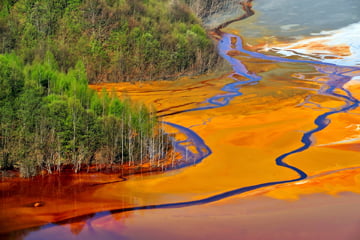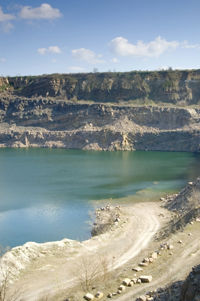Coming into the position of a Quality Control Chemist, I knew there would be a lot to learn just in a new job. New instruments, new techniques, new procedures to follow there was going to be a large amount to learn just to do right. However, the tricky thing about Quality Control is having to prepare for when things go wrong too and learning from that as well. What happened, why did it happen, and can I fix it are some of the biggest questions that come up when something goes wrong.
Read MoreTeledyne Leeman Labs Blog
Learning through Failure from a Quality Control Chemist's Perspective
Posted by Aaron Keller on Apr 20, 2022 9:16:47 AM
Tags: Interest Stories
New Augmented Reality App Brings Chemistry to Life
Posted by Betsey Seibel on Apr 24, 2017 3:13:05 PM
It was only a matter of time.
Virtual reality and augmented reality, a.k.a. VR and AR have become increasingly popular with revenue forecasts of $120 billion by 2020. It was only a year ago that the world was taken over by kids walking all over their neighborhoods hunting down and capturing virtual characters on Pokémon GO, a location-based AR game. By the end of February 2017, Pokémon Go had been downloaded more than 650 million times.Tags: Interest Stories
The Gold Rush's Legacy… Once Gold, Now Mercury in Abundance
Posted by Jason Davis on Oct 28, 2014 3:26:31 PM
The following is Part I of a multi-part series of posts about Mercury
Overview
A recent series of articles in the The Tribune, a newspaper covering San Luis Obispo, Calif. and surrounding communities, highlighted the legacy of California’s mountain of gold and the environmental hazard leftover from the intense mining of the era. The articles reminded me of a 2013 report1 in USA Today about the findings of high levels of mercury in sites along the California’s Yuba River. While mercury emissions and environmental contamination is not a new topic, I was surprised to learn that the origins of the mercury were traced to the immense piles of Gold Rush-era mining debris in the river valley. As one subject is often interwoven with another, I eventually found myself digging up mining practices of 1848, sifting through fact sheets explaining mercury’s various forms and health effects, and finally examining statistics and perspectives on how researchers are addressing mercury contamination today.
Read MoreTags: Interest Stories
ICP-OES instruments used to analyze mining waste from abandoned copper mines
Posted by Betsey Seibel on Oct 20, 2014 11:02:15 AM
Less than 40 years ago in 1978, the Communist dictator of Romania ordered the 400 families living in the small village of Geamana to leave their homes so that the country could build a copper mine. Unfortunately, the people did not have much choice as the village was to become an artificial lake for the toxic waste from the Rosia Poieni, one of Europe’s largest copper mines. The water that covers Geamana is laced with cyanide and other chemicals, making the area uninhabitable. Recently, the website Roadtrippers published several pictures from the abandoned village.
Unfortunately, the fate of Geamana is not uncommon. In the United States, the area around Treece, Kansas and Picher, Oklahoma was ranked in 1981 by the Environmental Protection Agency as the most contaminated in the country. The contamination was the result of extensive lead and zinc mining. In the 1920s, the area was the number one producer of the elements in the United States, supplying the metals for ammunition during the World Wars. While the metals were extracted, the waste was piled up around the town into mounds of contaminated gravel that still litter the landscape. A New York Times article from May 2012, describe the conditions:
Read MoreThoughts to Communities Impacted by Mount Polley Mine Breach
Posted by Betsey Seibel on Aug 14, 2014 11:57:00 AM
One week after a tailings pond dam burst at Mount Polley Mine near the cities of Williams Lake and Quesnel, British Columbia, environmental experts are saying it could be one of the worst tailings pond breaches in the world. Early estimates suggest that more than 2.64 billion gallons of mining waste and 4.5 million cubic meters of ground-up rock were released into Polley Lake, Quesnel Lake, Hazeltine Creek and Cariboo Creek. According to the mine’s owners 2013 mine report, substances that are disposed of on-site into the pond include arsenic, copper, lead, manganese, mercury, phosphorus, and selenium; among several other metals. Days following the breach, hundreds of local residents were banned from using the water for drinking or bathing, campgrounds were evacuated, fishing was banned and an emergency was declared.
As a company, we were saddened to read about the breach and by its initial and impending impact. Our first thoughts are with the people and communities in British Columbia who are suffering through this unfortunate situation. This type of disaster can have a devastating impact on the local ecosystem, and its clear that a massive waste removal project will be required in the future. Many are comparing this to a tailings pond breach in Tennessee in 2008, where cleanup was slow and estimated at $600-800 million. Monitoring the rise in toxins absorbed by fish and wildlife has started, and officials are conducting regular water quality tests of area resources to better understand the aftermaths. On a positive note, an early round of tests completed last week found that water “samples indicate that none of the chemical and physical parameter concentrations exceeded B.C. or Health Canada drinking water guidelines.” Unfortunately, “All five testing sites also had zinc levels above chronic, or long-term, exposure limits for aquatic life.”
Read MoreTags: Mining, Interest Stories





